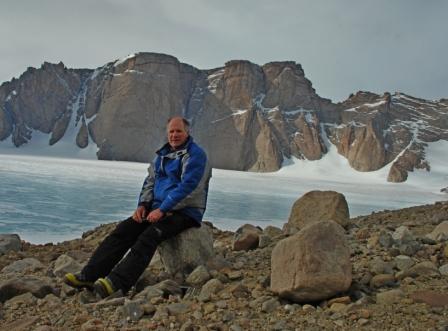
The great beauty of the Southern African landscape has been extolled in many disciplines. Professor Ian Meiklejohn of the Rhodes University Geography Department gave his inaugural lecture last week on the topic Landscapes, Space and Time – The Arctic to the Antarctic and places in-between adding that so inspiring is the geomorphology associated with South Africa that it was used to develop a global model for landscape development that had as a basis, Process, Stage and Structure.
Professor Meiklejohn has had the opportunity to carry out valuable research in the Arctic and the Antarctic. In between these two extremes, he has conducted research in the Drakensberg/Ukhahlamba National Park and on Marion Island.
His research in the northern hemisphere was on animal/landscape interaction in the Swedish Arctic, where he participated in research that considered how landscapes provide habitats for rodent populations such as lemmings. The Arctic, he says, is showing the impact of a changing world very clearly, with sea ice over the North Pole fast disappearing.
Research in the Drakensberg/Ukhahlamba National Park looked again into landscapes, this time on a micro-scale. The San art, on the sandstone cave walls of the Drakensberg, represents one of the greatest stores of rock art in the world, and provides modern-day peoples with a link to San culture and spiritual beliefs.
Unfortunately it is painted on surfaces which are weathering. Professor Meiklejohn and his team focused on the interface between the paintings and the rock surface, using thermal imaging to analyse the pigments, gain an understanding of their composition and see which of the colours are weathering faster.
Other experiments included looking at the impact light has on sandstone, and measuring the moisture levels in the rock. Interactions between the sandstone and the plant and insect life living in its tiny cracks speeds the weathering process.
In a discovery which has had an impact on how archaeologists view the art, Professor Meiklejohn and his research colleagues discovered that the San artists prepared the rock surfaces by smoothing them down before applying their pigments, and applied a smooth layer of clay onto the rock before the pictures were painted. Grinding stones, which are ubiquitous at these rock art caves, are often found to be from rock deposits many miles distant.
His next area of research was Marion Island, which experienced a large temperature shift in the thirty years between the 1960s and the 1990s, reducing the islands ice cap quite dramatically. In that time 42 million cubic metres of ice was lost.
Marion Island is volcanic in nature, so this loss cannot be attributed solely to either climate change or geothermal activity. However phylogeographic, geomorphic and geo-entomological investigations of tiny mites found in the cracks of the rocks indicate that Marion Island has been ice-free in parts in the geological past, contrary to accepted belief.
Professor Meiklejohn’s research in Antarctica, which is on-going, involves sinking boreholes into permafrost, and investigating the tiny flora and invertebrate fauna found in the polygons, or cracks, in the rock. These polygons were created by large scale freezing over the rock, and the presence of these life forms indicates that despite the extremely low temperatures the landscape itself is providing the possibility of biodiversity.
An example of what geomorphologists describe as ‘convergence of form’ is clear in the sorted patterns found in sediment in the Antarctic, the Drakensberg, on Marion Island and elsewhere; while the environments are entirely different, some of the landforms found there are similar.
NASA’s satellite shots of the Antarctic show a very dynamic picture of warming and cooling in the region. The weathering this temperature range creates in the rock provides habitats for nine different known lichens in the Ahlmannryggen area of the Antarctic.
Professor Meiklejohn finished his talk with a series of photographs, showing the wild beauty of the icy landscape, a fitting answer to the often asked question “Why on earth would you want to work in Antarctica?”
By Jeannie McKeown
Photo supplied: Prof Ian Meiklejohn, Jutelslessen_Antarctica
